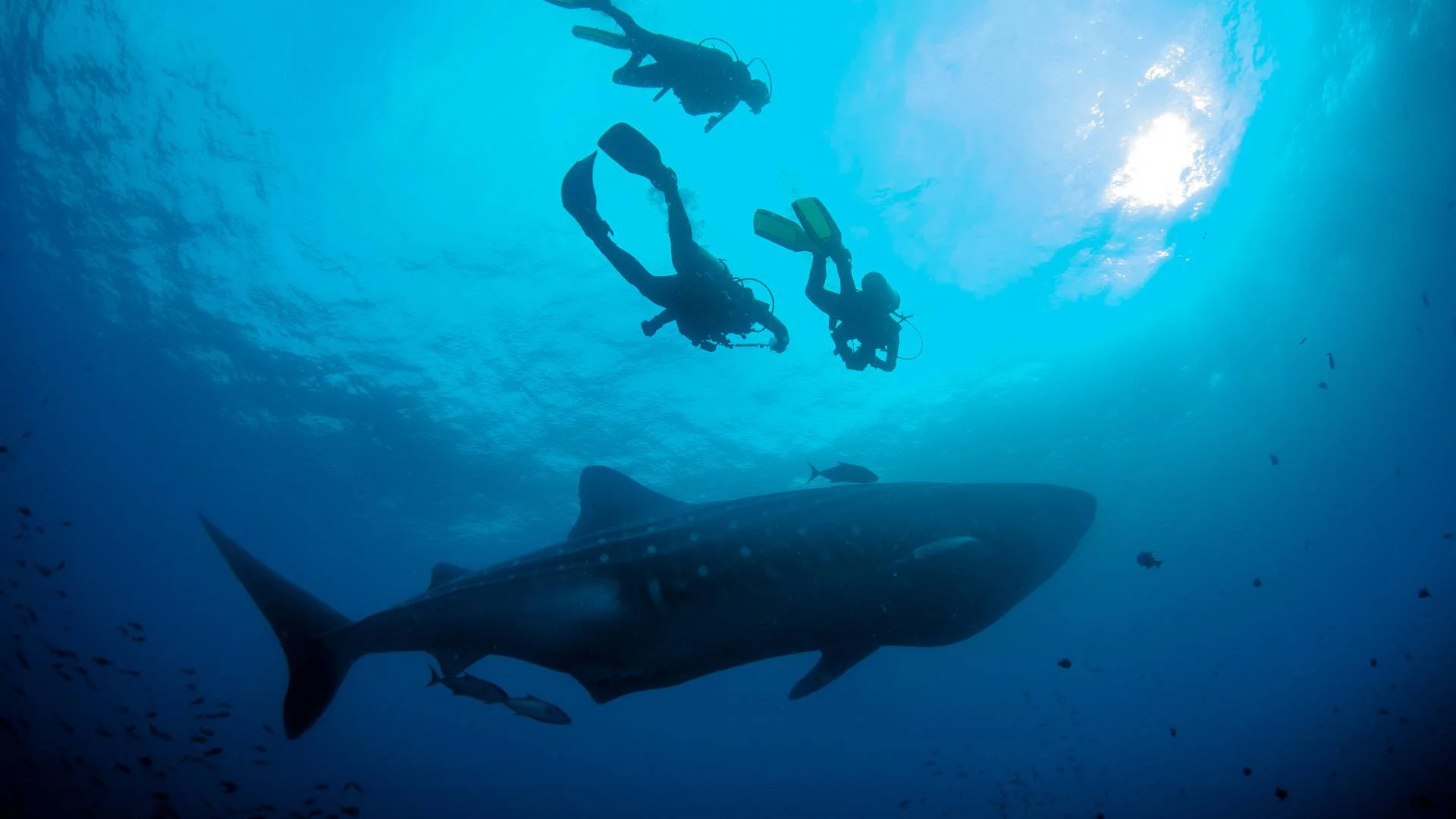
Scuba divers meet world's biggest sharks close up in Galapagos Islands | Travel News
The Galapagos Islands are remarkable for many reasons. Located on the equator, off the coast of Ecuador, they host an array of extraordinary wildlife. Four major ocean currents meet here, causing a nutrient-rich upwelling that draws in fish and other marine life. This abundance attracts larger predators like hammerhead sharks, silky sharks, and Galapagos sharks, which gather in large numbers. Trevallies, large fish that prey on smaller species, are also prevalent. One of the ocean’s most awe-inspiring creatures, the whale shark, also visits these waters. As the largest living fish—only surpassed in size by a few whale species—whale sharks are often bothered by remoras, fish that attach themselves with suction cups, creating drag that hampers their long-distance swimming. Remoras also enter the gill slits of whale sharks, disrupting their ability to filter plankton and krill effectively.
Whale sharks come to the Galapagos for cleaning stations, where silky sharks and trevallies help rid them of these bothersome remoras. Trevallies, being both large enough to catch remoras and small enough to enter the whale shark’s gill slits and mouth, play a significant role in this cleaning process, providing relief for the whale sharks while feeding themselves. Sometimes, a single whale shark can carry dozens of remoras, which hitch a ride to avoid swimming and feed on whale shark waste and fish scraps. While a few remoras can be beneficial by removing parasites, too many become a burden. Scuba divers who encounter a whale shark are incredibly lucky, as swimming alongside one of the world's largest creatures is a truly awe-inspiring experience.
Check Our Suggested Tours:
- Western Galapagos Journey 8-Day Cruise from Baltra
- Enchanted Luxury Central and West Galapagos Islands Cruise M/V Grand Majestic
- Amazing East & Central Islands Boat Journey
- Itinerary 6 Days Cruise Western & Central Islands
- Galapagos Eastern Islands 8 day cruise Itinerary on board Ocean Spray
- Eastern Galapagos Odyssey: An 8-Day Luxury Exploration Aboard the Integrity Yacht

